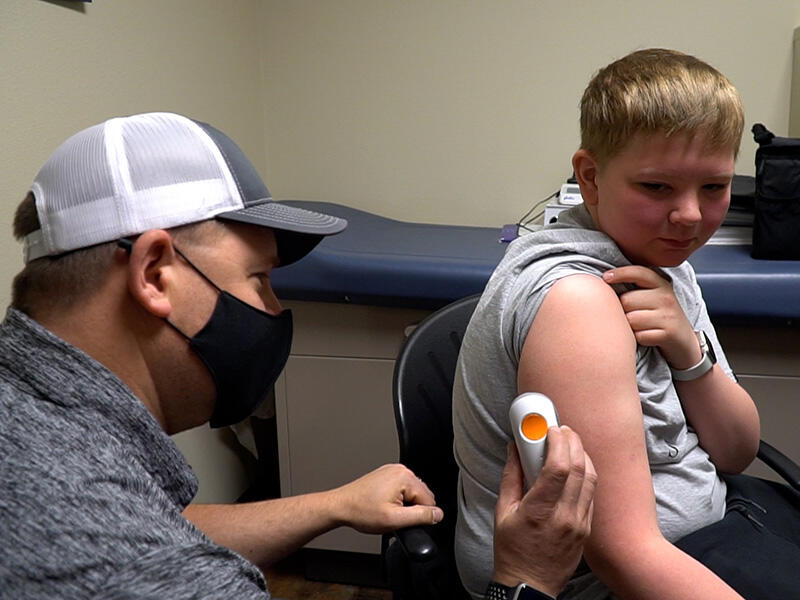When Lucas Paulson ofWatford City, North Dakota, first got sick, his parents thought he’d get better in a few days.
“他得了流感,好了一天,然后好像又得流感了,症状还是一样,你知道。这是治疗流感的方法。你给他输液,喝七喜,可口可乐,佳得乐,Powerade试图让他吃鸡汤和任何他能喝下去的东西。卢卡斯的父亲克雷格·保尔森(Craig Paulson)说。
Until one day, Lucas couldn’t even stand on his own anymore.
“I remember waking up and trying to walk to the bathroom and needing to have help walking in a straight line because I couldn’t walk at all,” said Lucas. “I got to the bathroom and I threw up again.”
They rushed him to the emergency room, and after some tests, doctors realized what was wrong.
“They came back and said his blood sugar is 706 and the doctor looks at me and he goes, ‘That makes sense. That’s what’s going on. This is probably the onset of diabetes,’” said Katie Paulson, Lucas’ mother.
Normal blood sugar is less than 100 mg/dL.
“I think I blacked out for a minute and then I remember waking up and them saying, well, we were going to be flown to Bismarck,” said Lucas.
Life-threatening complications
Lucas was suffering from diabetic ketoacidosis, a life-threatening complication from diabetes. His pancreas was no longer producing insulin, but neither he nor his family knew it until he became seriously ill.
“He had been sick for quite a while, so his blood sugars were high,” said Kelly Fisher, a registered dietician and certifieddiabeteseducator atSanford Bismarck. “He was very dehydrated. They thought they were dealing with flu, which a lot of families do. A lot of families don’t suspect diabetes right away.”
Juvenile diabetes is common
According to the Juvenile Diabetes Research Foundation, there are 1.6 million Americans living with type 1 diabetes, including approximately 200,000 people under the age of 20. Diabetes is a treatable disease, but there is no cure, so people like Fisher help new patients and their families learn how to live with their diagnosis.
费舍尔说:“我们在教他们如何检测血糖,如何使用监测仪,如何注射胰岛素,如何处理胰岛素……这些都是日常的日常事务。”
“How does this fit into the routine of what he does? How is going back to school gonna look? What are his friends going to say? We always talk about that.”
Managing his disease
Along with the folks at Sanford Health, Lucas has someone else to guide him as well. His grandfather has type 1 diabetes and has managed it most of his life.
“The advances in the technology and the medicine behind diabetes now is a lot different than it was 45 years ago when my dad was diagnosed and years before that when my grandfather was diagnosed, and I’ve seen some of those changes with how my dad has been able to treat diabetes too,” said Katie Paulson.
While he learned he had type 1 diabetes in a terrifying way, Lucas is already adjusting to his new way of life. He says “getting poked with needles is pretty annoying” but that all in all managing his diabetes has been “pretty easy.”
在桑福德健康中心费舍尔等人的帮助下,在父母的照顾下,卢卡斯恢复了自我,过上了正2022世界杯巴西阵容常的生活,尽管他患有1型糖尿病。
Learn more
- What to do if your little one has type 1 diabetes
- Meet a family enrolled in type 1 diabetes study
- Podcast: Research screening works to end type 1 diabetes
…
Posted InChildren's,Digestive Health,Emergency Medicine

